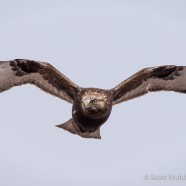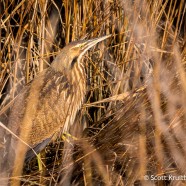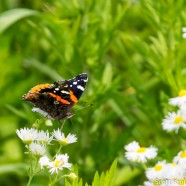Red Fox
This Red Fox is one of the kits that I enjoyed watching grow up before our eyes last spring. It is not doing so well now, and is probably one of the two that I saw had returned to their natal den at the beginning of the winter when things got tough outside. Both had some mange and looked rather thin. This individual has been hunting and stalking prey, still engaged at feeding regularly and apparently doing enough to keep itself going. While its tail has little to no fur left and it is patchy throughout the body at least the days are getting warmer and the sun is getting stronger. This...
Read MoreRough-legged Hawk
This Rough-legged Hawk put on a brief but thrilling show for me today, facing into the wind to help it hover while scanning the land below for any small mammal prey. The wind was particularly strong thanks to the major storm currently impacting the Northeast region. Whichever one of the hawk’s eyes that was being battered by the wind the most was often covered by its nictitating membrane. This third eyelid is almost like wearing a pair of sunglasses for the raptor in that it can still see while the eye is more protected than it would be otherwise. It was also keeping the eye moist with...
Read MoreAmerican Bittern
This is the American Bittern (Botaurus lentiginosus), a stupendously cryptic and sensationally camouflaged heron species of freshwater and brackish marshes and wetlands. During late fall and winter they can be infrequently found moving south to warmer or coastal areas where the water does not freeze. Even their movements are meant to blend in perfectly to surrounding vegetation, stalking prey including fish, amphibians, insects, mammals, reptiles, and more. The American Bittern was once a terror in the night to many early American settlers who lived in coastal regions. Its pumping, gurgling,...
Read MoreRed Admiral Feeding
The Red Admiral butterfly parade continues! Many have been pouring through the north, and are often noted as having been a primary Purple Martin food source this summer with bits of them left at gourd colonies. This individual paused for a moment and actually allowed me to snap off a shot as many typically have been flying by me without a second look. This sort of flight year really does help our aerial insectivores, a good example of the importance of our food web from bottom to top. Scott Kruitbosch Conservation & Outreach Coordinator
Read MoreBlue Dasher Stare
You feel like having a staring contest? This Blue Dasher (Pachydiplax longipennis) is game. Good luck! You’re going to need it…
Read More








